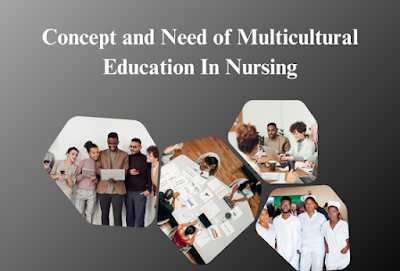The Concept and Need of Multicultural Education In Nursing. This, in turn, enables them to provide culturally sensitive care to foreign mothers.
The Concept and Need of Multicultural Education In Nursing
Multicultural nursing education focuses on understanding and appreciating different cultures, beliefs, and practices to ensure culturally competent care. This is necessary because nurses increasingly work with people from different cultural backgrounds. Neglecting cultural differences can lead to misunderstandings, mistrust, and ineffective care. Multicultural training enables MBU nurses to recognize the diversity of cultures, thereby strengthening their multicultural acceptance and cultural competence in practice.
Multicultural Education In Nursing As the demographic landscape of the United States evolves, so too does the necessity for multicultural education in nursing. By 2050, projections suggest that minorities will comprise 50% of the population, which will significantly influence academic institutions, including nursing schools. This shift highlights a crucial need for curricula and support systems that reflect and accommodate this diversity.
Current Demographic Challenges in Nursing Education
Recent data underscores the disparities faced by minority groups in higher education. Latino/a, African American, and Native American students have historically shown lower college enrollment and retention rates compared to their white counterparts. This trend extends to nursing schools, where efforts to recruit and retain a diverse student body are essential. Despite a growing student population that is increasingly diverse, the majority of nursing faculty remain predominantly white, presenting a challenge for fostering an inclusive educational environment.
The Faculty Diversity Gap
Between 1997 and 2007, while the percentage of students of color in U.S. colleges and universities increased from 25% to 30%, the proportion of full-time faculty of color only marginally improved, from 13% to 17%. Women of color, in particular, remain underrepresented, holding just 7.5% of full-time faculty positions in 2007. This underrepresentation extends to higher academic ranks, where women of color are significantly less prevalent.
Implications for Nursing Education
The disconnect between the diverse student body and the predominantly homogeneous faculty has implications for creating an inclusive learning environment. The Sullivan Commission (2004) and the Institute of Medicine (IOM) report (2010) emphasize the importance of increasing diversity within the healthcare workforce. The IOM advocates for doubling the number of nurses with doctorates to enhance leadership and scientific discovery, which in turn will improve patient care and prepare future nurses effectively.
Addressing Diversity in Nursing Programs
Despite the increased enrollment of minority students in nursing programs—approximately 30% at various levels—the challenge remains to ensure that these students are adequately prepared for both professional practice and civic engagement. This requires a concerted effort to create a learning environment that mirrors the community and supports diverse perspectives.
What is Multicultural Education?
Multicultural education involves teaching practices that incorporate the values, beliefs, and perspectives of students from various cultural backgrounds. It aims to promote equality and inclusion, addressing learning outcomes and success for all students. Banks (2007) identified five key dimensions of multicultural education:
- Content Integration: Including diverse perspectives and knowledge in the curriculum.
- Knowledge Construction: Understanding how knowledge is constructed and how cultural biases can influence it.
- Equity Pedagogy: Implementing teaching methods that ensure equal opportunities for all students.
- Prejudice Reduction: Actively working to reduce biases and prejudices in the classroom.
- Empowering School Culture and Social Structure: Creating an inclusive environment that empowers all students.
The Role of Faculty in Multicultural Education
Faculty members must develop cultural competence to effectively support diverse students. Yoder (1996) describes a continuum of cultural competence among educators, ranging from lack of awareness to full cultural sensitivity. Educators should strive to appreciate and value diversity, adapting their teaching methods to meet the needs of all students and encouraging students to maintain their cultural identity while integrating into the dominant culture.
Conclusion
Multicultural education is essential in nursing to ensure that all students receive equitable opportunities and to prepare them for a diverse healthcare environment. By addressing the gaps in faculty diversity and incorporating multicultural practices into the curriculum, nursing programs can better serve their students and, ultimately, their patients.
Read More:
https://nurseseducator.com/didactic-and-dialectic-teaching-rationale-for-team-based-learning/
https://nurseseducator.com/high-fidelity-simulation-use-in-nursing-education/
First NCLEX Exam Center In Pakistan From Lahore (Mall of Lahore) to the Global Nursing
Categories of Journals: W, X, Y and Z Category Journal In Nursing Education
AI in Healthcare Content Creation: A Double-Edged Sword and Scary
Social Links:
https://www.facebook.com/nurseseducator/
https://www.instagram.com/nurseseducator/
https://www.pinterest.com/NursesEducator/
https://www.linkedin.com/in/nurseseducator/
https://www.researchgate.net/profile/Afza-Lal-Din
https://scholar.google.com/citations?hl=en&user=F0XY9vQAAAAJ
